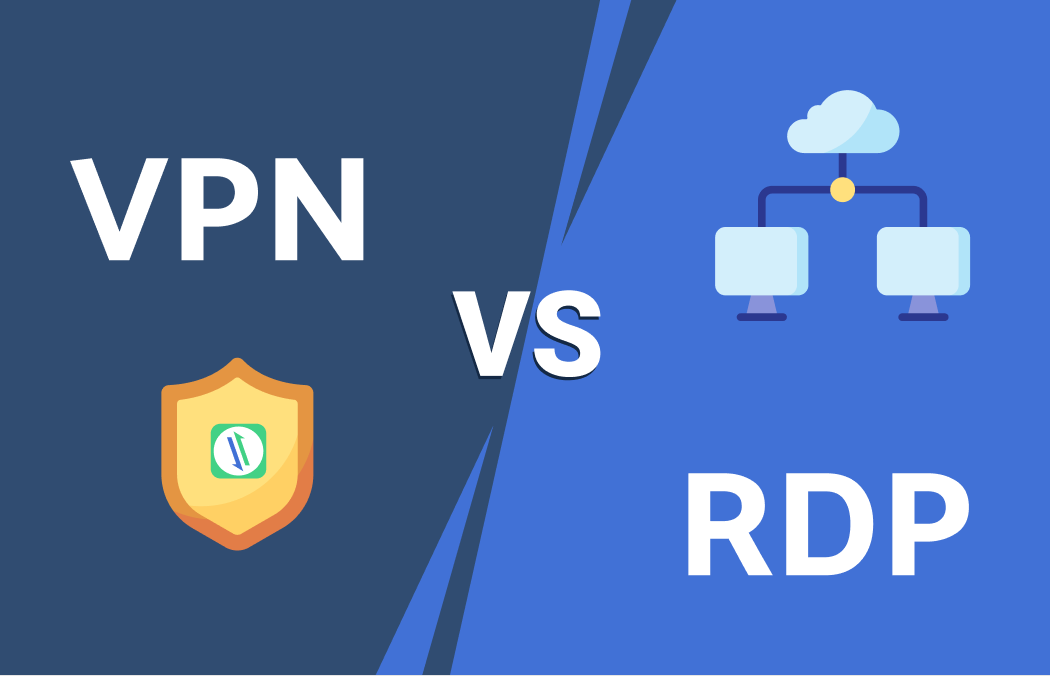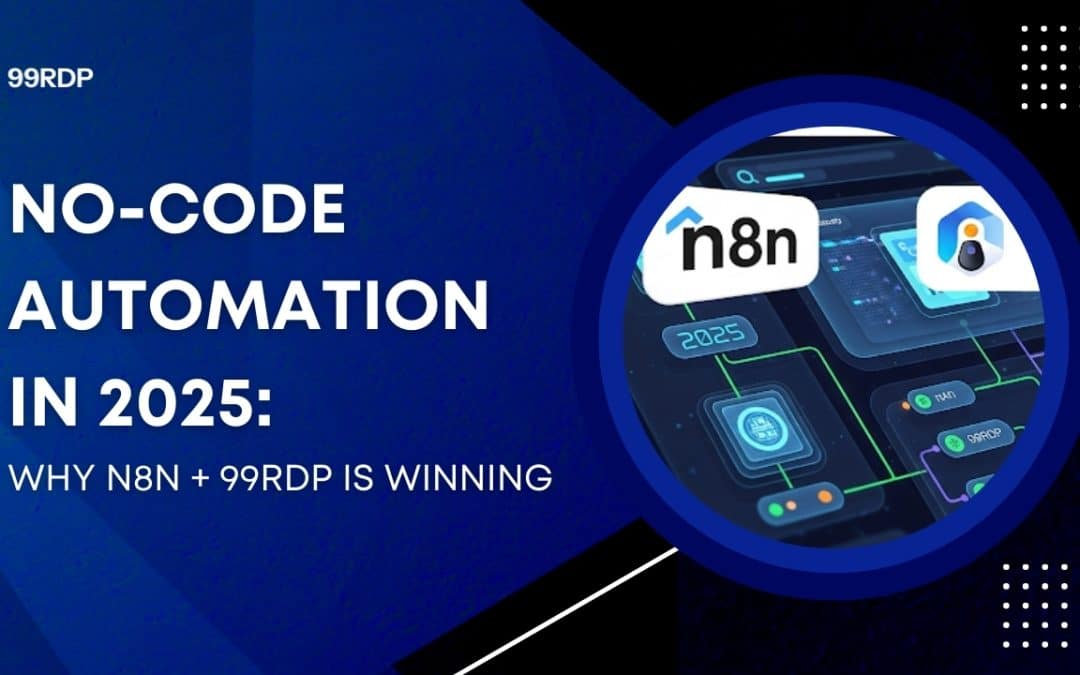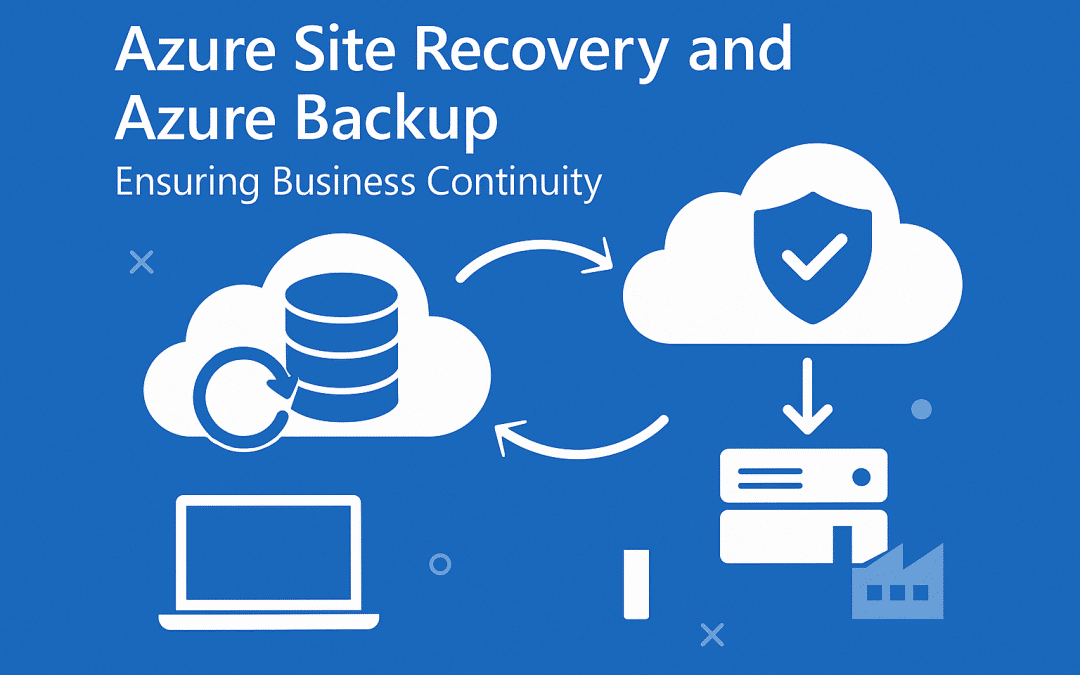Difference Between RDP And VPN For Remote Access
Read this article to learn about the, ‘Difference Between RDP And VPN For Remote Access’.

In the present era, remote access is a must-have for any successful business. Remote access must provide safe and dependable connections for all users, whether they are employees working from home or third-party vendors connecting to a customer’s network.
VPNs and RDP (remote desktop sharing) are two of the most well-known and widely-used remote support tools. In spite of their theoretical and practical differences, they share fundamental shortcomings in terms of utility, efficiency, and safety.
Understanding the benefits and drawbacks of these more conventional remote access methods is essential before settling on the best option for your business.
What is a Remote Desktop Protocol (RDP)?
Microsoft’s Remote Desktop Protocol (RDP) is a safe means of communicating over a network. It grants users remote access to their actual workplace desktop computers and allows network administrators to remotely identify problems experienced by individual users.
Remote desktop protocol allows workers to access their office computers while at home or on the road. Support technicians who are required to remotely detect and repair a user’s system, as well as administrators performing system maintenance, frequently use RDP.
A user or administrator needs RDP client software in order to establish a connection to a remote Windows PC or server operating RDP server software and start a remote desktop session. The remote user or administrator can access and interact with applications and files in the same way as if they were physically present at the computer.
In addition to Windows, RDP clients are available for macOS, Linux, Unix, Google Android, Apple iOS, and even an open source edition. The RDP protocol was developed as an upgrade to the ITU-T T.128 application sharing standard.
What is a Virtual Private Network (VPN)?
A virtual private network (VPN) is an extension of a private network across a public network that gives remote users the same level of security and privacy as if their devices were directly connected to the private network.
Use a virtual private network (VPN) to gain access to a private network and its resources from a public network, such as the Internet or a coffee shop like Starbucks (public network) where you are working remotely.
A virtual private network (VPN) is sufficient for the vast majority of telecommuting office workers. As far as functionality goes, their connection is identical to what they would have at their desk at work. Even less functionality and security is provided by VPNs for third-party vendors, which is especially crucial given the high risk of data breach posed by such connections.
Difference Between RDP And VPN For Remote Access
Disadvantages of VPNs
Giving outsiders VPN access completely disables any security measures in place. Some of VPNs’ security flaws include the following.
a) Minimum access controls
Even though virtual private networks (VPNs) allow for some measure of access control, the more controls that are put in place, the less efficient the VPN connection becomes. Third-party representatives who need rapid login to address an urgent issue incur unnecessary costs due to VPN controls that slow down the login process.
These kinds of access controls also fall short of other necessary security measures, such as zero-trust approaches. Access notifications, which alert the company whenever a vendor connects to the network, and schedule-based access, which limits user access to specific times of the day, are both features that VPNs lack.
b) Credential management is not there
Access to a company’s digital infrastructure is restricted behind locked doors, and only those with the proper credentials can enter. Credentials are required for third parties to access the networks and systems of their customers, but it is the responsibility of the customer organization to keep these credentials secure.
Proper credential management reduces the likelihood that a vendor representative or hackers will gain unauthorized access to sensitive information by discovering or stealing passwords. As VPNs do not provide any sort of credential management, vaulting, or obfuscation, you must rely on your third-party providers to keep your passwords secure. So the question arises, how much faith do you put in your outside vendors?
c) Session monitoring is not there
A major drawback of VPNs is that access cannot be monitored. Virtual private networks (VPNs) do not keep logs of their connections with external vendors or conduct audits of their activity while they are active. They lack the resources to keep vendors in check or to hold representatives to account for their actions on company time. Without surveillance footage, it would be impossible to determine what caused any potential incident and pinpoint its origin. The end result is an overabundance of access that leaves businesses open to attack without adequate protections in place.
d) Employment status is not verified
Not every remote access method has this limitation, but VPNs can’t tell you whether or not your third-party reps are actually still employees. The likelihood of a disgruntled former worker gaining unauthorised access to company networks via stolen VPN credentials is reduced when current and former employees’ employment statuses are verified.
Disadvantages of RDP
This kind of connection is helpful for the third party’s support capabilities but leaves the customer extremely exposed. Like virtual private networks (VPNs), RDP has drawbacks that make it an easy target for hackers due to inadequate security measures like inadequate access controls, supplier management, and monitoring.
a) Access control is not there
Through a desktop sharing tool, anyone, no matter where they are, can access your computer. When an employee initiates remote support, they do so by clicking a link and giving up control of their computer. Moreover, without access controls in place, a vendor representative has the same level of access as the user they are connected to.
The lack of access schedules or notifications is also typical of VPNs. While there may be approval processes in place, once a vendor has been granted access, they have free reign over the entire network. Hackers frequently employ this strategy, in which they gain access to a single network node at a low level and then spread out from there by searching for other vulnerable machines or services.
b) Lack of Identity Management for Vendors
The fact that any RDP user can see another’s desktop is a major drawback of the technology. Since RDP doesn’t necessitate permissions, there’s no need to register users or keep track of/log what access is granted to each third-party rep. Once a representative logs into a computer on the network, they will have full access to all of that computer’s files and resources, both locally and across the network.
c) Minimum session monitoring
Though session recording is an option in many desktop sharing tools, it is rarely used. Detailed audit reports required to show compliance with regulations, internal security policies, or legal teams are rarely provided by these tools.
The majority of surveillance depends on whether or not the target employee consents to being watched. Not to mention, there’s no telling when an employee might step away from their desk, leaving a salesperson (or hacker) unattended and unchecked with access to sensitive data.
RDP vs VPN for Remote Access
Remote Desktop Protocol (RDP) and Virtual Private Networks (VPN) both facilitate remote access to computers, but VPNs also grant users access to secure networks.
While it’s helpful to give workers and outsiders access, that access is both permanent and insecure. Given the current state of the internet, the rise of remote work, and the proliferation of IoT, hackers are increasingly targeting the weakest links in these systems. These easy ways in typically involve third parties and their sloppy remote access methods that are hard to monitor or control.
RDP vs VPN for Safety
The most important distinction between a virtual private network (VPN) and a remote desktop protocol (RDP) is that the latter gives endpoints more flexibility. By switching between multiple IP addresses, Remote Desktop Protocol (RDP) can increase privacy even when the same physical device is being used.
Virtual private networks (VPNs) lack two important security measures: access controls and session monitoring. All of these supplementary features, plus monitoring in the unusual case, are made available by RDP. Although these features are helpful, they are extremely basic and not nearly enough to account for the sophisticated methods that hackers have developed.
Virtual private networks (VPNs) and remote desktop connections (RDPs) fall short of providing fully secure remote access. Cyber attacks (like Colonial Pipeline) have been caused by these antiquated methods, and these methods are still insufficient to protect businesses from data breaches. When it comes to the new vector of choice for hackers — third-party remote access — an organization shouldn’t settle for minimal security.
There are other options besides virtual private networks and remote desktop connections to consider when looking for secure remote access. This remote access security checklist can help you ensure that your remote connections are as safe as they can be, or you can look into alternatives to VPNs and RDP software that are specifically designed to manage access by third parties.
CONCLUSION
After reading this article, you might have got a good idea about, Difference Between RDP And VPN For Remote Access.
You can read this article to know about what is required for accessing RDP. You can also read this article to know about the features and functions of RDP.
Visit our website, 99rdp.com to learn about the pricing plans of different types of RDP.



